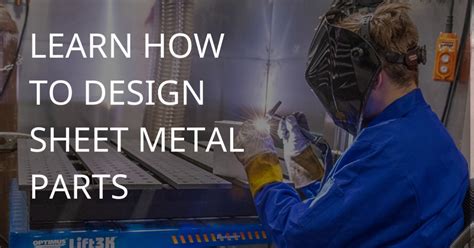am processes for fabricating precision metal parts Each metal fabrication process has its own advantages and ideal applications. In this blog, you will explore different processes for metal contract manufacturing. Each metal . It’s very important to use the correct grade and coarseness of steel wool for specific projects because using the wrong grade can cause damage or can produce an undesirable result. Using the correct grade will help ensure .
0 · protolabs metal fabrication guide
1 · metal parts manufacturing process
2 · how to manufacture metal parts
3 · how to manufacture metal
Whats the difference between Series 1 & 2 US General tool chests? The biggest difference is the Series 2 cabinets/chests are deeper. 22" vs" 18" on the Series 1. S2 lid goes up all the way vertical and the lifts don’t interfere with storage as much.
Learn about the material properties of hard and soft metals as well as the machining, molding, and 3D printing processes used to manufacture metal parts. Each metal fabrication process has its own advantages and ideal applications. In this blog, you will explore different processes for metal contract manufacturing. Each metal .This paper provides a brief overview of common metal AM processes, including powder bed fusion, binder jetting, directed energy deposition, and sheet lamination. The advantages of each metal AM technology and their limitations are compared and addressed with examples.Learn about the material properties of hard and soft metals as well as the machining, molding, and 3D printing processes used to manufacture metal parts.
Each metal fabrication process has its own advantages and ideal applications. In this blog, you will explore different processes for metal contract manufacturing. Each metal fabrication process has its own advantages and ideal applications. . Machining is used to create precision parts like medical implants, custom fittings, aerospace .Cost considerations and optimization Factors affecting the cost of custom metal parts. Material Selection: Prices of different metals are affected by their availability and processing requirements.; Design complexity: Complex designs require more advanced machining and are costlier.; Production volume: Larger quantities lead to lower unit costs because of economies of scale.
We also offer fabrication processes such as punching, shearing, notching, laser cutting, and extruding. These various processes and their related machinery allow for precision measurements and tight tolerances, supporting high dimensional accuracy in fabricated parts. While the increased precision of metal AM in recent years reduced the needed amount of post-processing to meet dimensional tolerance, the requirements for functional surfaces necessitate a well-understood post-processing, ranging from heat treatment to machining and finishing. Additive manufacturing (AM) is an emergent technology with potentials to transform conventional manufacturing. AM processes help to reduce the need for tooling and provide flexibility in design and product customization as compared to conventional processes [1, .
In this paper, a benchmarking analysis is carried out between two different AM processes for metals and the dimensional accuracy of each AM machine is defined using the ISO IT grades of a reference artifact. We’ve compiled a list of technologies for you, complete with explanations, advantages, and disadvantages, to help guide you along. If you know anything about metal AM, you’re probably familiar with powder bed fusion technology.
In this invaluable resource Marc Saunders, Renishaw plc’s Director of Global Solutions Centres, details how these parameters define the ‘operating window’ in which AM users must work, and offers advice on identifying the ideal process parameters for metal AM parts.This paper provides a brief overview of common metal AM processes, including powder bed fusion, binder jetting, directed energy deposition, and sheet lamination. The advantages of each metal AM technology and their limitations are compared and addressed with examples.Learn about the material properties of hard and soft metals as well as the machining, molding, and 3D printing processes used to manufacture metal parts.
Each metal fabrication process has its own advantages and ideal applications. In this blog, you will explore different processes for metal contract manufacturing. Each metal fabrication process has its own advantages and ideal applications. . Machining is used to create precision parts like medical implants, custom fittings, aerospace .Cost considerations and optimization Factors affecting the cost of custom metal parts. Material Selection: Prices of different metals are affected by their availability and processing requirements.; Design complexity: Complex designs require more advanced machining and are costlier.; Production volume: Larger quantities lead to lower unit costs because of economies of scale.We also offer fabrication processes such as punching, shearing, notching, laser cutting, and extruding. These various processes and their related machinery allow for precision measurements and tight tolerances, supporting high dimensional accuracy in fabricated parts.
While the increased precision of metal AM in recent years reduced the needed amount of post-processing to meet dimensional tolerance, the requirements for functional surfaces necessitate a well-understood post-processing, ranging from heat treatment to machining and finishing. Additive manufacturing (AM) is an emergent technology with potentials to transform conventional manufacturing. AM processes help to reduce the need for tooling and provide flexibility in design and product customization as compared to conventional processes [1, . In this paper, a benchmarking analysis is carried out between two different AM processes for metals and the dimensional accuracy of each AM machine is defined using the ISO IT grades of a reference artifact. We’ve compiled a list of technologies for you, complete with explanations, advantages, and disadvantages, to help guide you along. If you know anything about metal AM, you’re probably familiar with powder bed fusion technology.
protolabs metal fabrication guide

1.25 junction box
10 1 inch square drive sheet metal screw
CNC (Computer Numerical Control) machining is the process of using a machine to automatically remove material from raw stock based on a set of computer-generated instructions. It can be performed on almost any material from expanded polyurethane foam to .
am processes for fabricating precision metal parts|how to manufacture metal